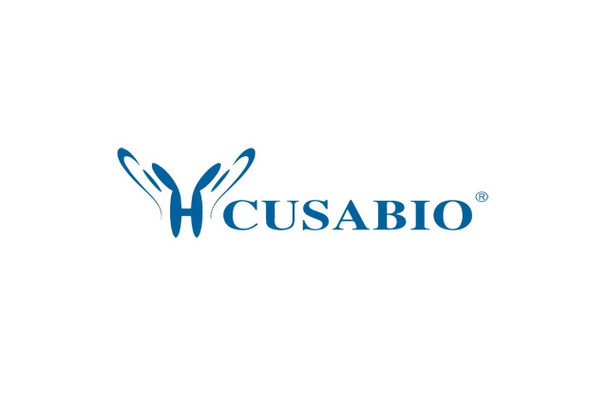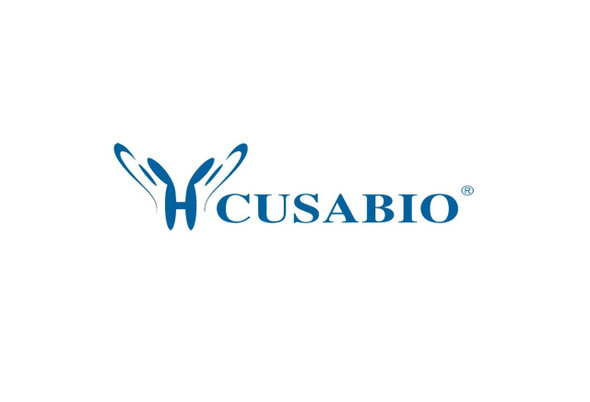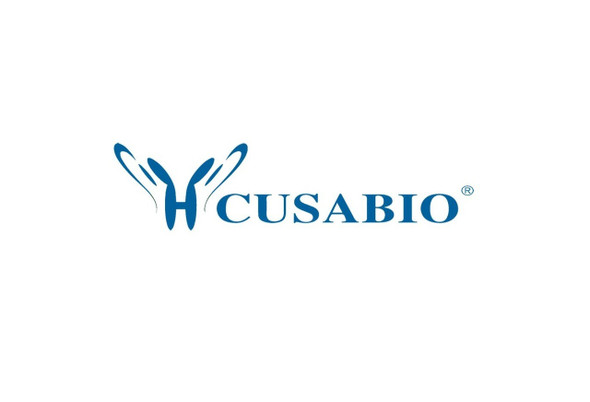Cusabio Bos taurus Recombinants
Recombinant Bovine Adiponectin (ADIPOQ) | CSB-YP661101BO
- SKU:
- CSB-YP661101BO
- Availability:
- 3 - 7 Working Days
Description
Recombinant Bovine Adiponectin (ADIPOQ) | CSB-YP661101BO | Cusabio
Alternative Name(s): 30KDA adipocyte complement-related protein;Adipocyte complement-related 30KDA protein ;ACRP30Adipocyte, C1q and collagen domain-containing protein;Adipose most abundant gene transcript 1 protein ;apM-1
Gene Names: ADIPOQ
Research Areas: Others
Organism: Bos taurus (Bovine)
AA Sequence: EDNMEDPPLPKGACAGWMAGIPGHPGHNGTPGRDGRDGTPGEKGEKGDPGLVGPKGDTGETGITGIEGPRGFPGTPGRKGEPGESAYVYRSAFSVGLERQVTVPNVPIRFTKIFYNQQNHYDGTTGKFLCNIPGLYYFSYHITVYLKDVKVSLYKNDKALLFTHDQFQDKNVDQASGSVLLYLEKGDQVWLQVYEGENHNGVYADNVNDSTFTGFLLYHNIVE
Source: Yeast
Tag Info: N-terminal 6xHis-tagged
Expression Region: 18-240aa
Sequence Info: Full Length of Mature Protein
MW: 26.4 kDa
Purity: Greater than 90% as determined by SDS-PAGE.
Relevance: Important adipokine involved in the control of fat metabolism and insulin sensitivity, with direct anti-diabetic, anti-atherogenic and anti-inflammatory activities. Stimulates AMPK phosphorylation and activation in the liver and the skeletal muscle, enhancing glucose utilization and fatty-acid combustion. Antagonizes TNF-alpha by negatively regulating its expression in various tissues such as liver and macrophages, and also by counteracting its effects. Inhibits endothelial NF-kappa-B signaling through a cAMP-dependent pathway. May play a role in cell growth, angiogenesis and tissue rodeling by binding and sequestering various growth factors with distinct binding affinities, depending on the type of complex, LMW, MMW or HMW .
Reference: Identification and adipocyte differentiation-dependent expression of the unique disialic acid residue in an adipose tissue-specific glycoprotein, adipo Q.Sato C., Yasukawa Z., Honda N., Matsuda T., Kitajima K.J. Biol. Chem. 276:28849-28856(2001)
Storage: The shelf life is related to many factors, storage state, buffer ingredients, storage temperature and the stability of the protein itself. Generally, the shelf life of liquid form is 6 months at -20?/-80?. The shelf life of lyophilized form is 12 months at -20?/-80?.
Notes: Repeated freezing and thawing is not recommended. Store working aliquots at 4? for up to one week.
Function: Important adipokine involved in the control of fat metabolism and insulin sensitivity, with direct anti-diabetic, anti-atherogenic and anti-inflammatory activities. Stimulates AMPK phosphorylation and activation in the liver and the skeletal muscle, enhancing glucose utilization and fatty-acid combustion. Antagonizes TNF-alpha by negatively regulating its expression in various tissues such as liver and macrophages, and also by counteracting its effects. Inhibits endothelial NF-kappa-B signaling through a cAMP-dependent pathway. May play a role in cell growth, angiogenesis and tissue remodeling by binding and sequestering various growth factors with distinct binding affinities, depending on the type of complex, LMW, MMW or HMW (By similarity).
Involvement in disease:
Subcellular Location: Secreted
Protein Families:
Tissue Specificity:
Paythway:
Form: Liquid or Lyophilized powder
Buffer: If the delivery form is liquid, the default storage buffer is Tris/PBS-based buffer, 5%-50% glycerol. If the delivery form is lyophilized powder, the buffer before lyophilization is Tris/PBS-based buffer, 6% Trehalose, pH 8.0.
Reconstitution: We recommend that this vial be briefly centrifuged prior to opening to bring the contents to the bottom. Please reconstitute protein in deionized sterile water to a concentration of 0.1-1.0 mg/mL.We recommend to add 5-50% of glycerol (final concentration) and aliquot for long-term storage at -20?/-80?. Our default final concentration of glycerol is 50%. Customers could use it as reference.
Uniprot ID: Q3Y5Z3
HGNC Database Link: N/A
UniGene Database Link: UniGene
KEGG Database Link: KEGG
STRING Database Link: STRING
OMIM Database Link: N/A









